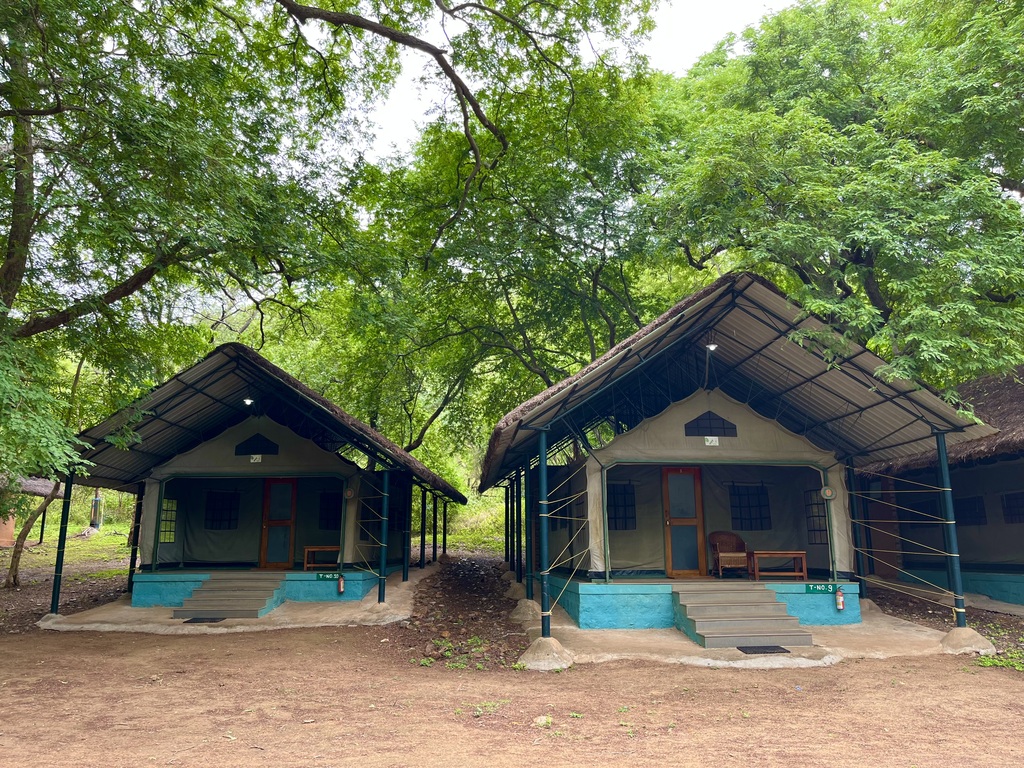| Address: | Mahankal Mandir, Jaisinghpura, Ujjain, Madhya Pradesh 456001 |
|---|---|
| How to go: | From Devi Ahilyabai Holkar International Airport, Ujjain is 60 km away by road. You can directly book a cab from the airport, which will cost around ₹1500. Alternatively, you can go to Sarwate Bus Stand, approximately 10 km from the airport, where buses to Ujjain are available. To travel from the airport to Sarwate Bus Stand, you can hire a metered auto. You can also book a bus through Redbus, as I did. These buses typically depart from Sarwate Bus Stand, Rajwada Chowk, or Guru Nanak Chowk. All buses to Ujjain will drop you off at Nanakheda Bus Stand, which is 4 km from the Mahakaleshwar Temple. From there, you can take a Rapido or hire an auto, which may cost around ₹100. |
| Pros: | Connectivity to visit all the temples inside city, food shop and availability of hotels. Try to get the hotel inside Mahakal marg to reach out Mahakaleshwar temple by walk. |
| Cons: | No such I found. |
| What to visit ? |
|
| Company: | Solo, family, friends |
| Minimum day/time to visit: | Min 2 days full max 3 days (Including all nearby spot) |
| Locality: | City |
| Expenses: | As per your itinerary, it can be decided. For visiting 7–8 temples in half a day, an auto will charge approximately ?500. If you want to personalize your itinerary, they may charge more, so be prepared to bargain. I have heard that a daily bus service for visitors also starts near the Mahakaleshwar temple. By paying ?100, it covers 4–5 main temples within the city. This service is especially beneficial for elderly people and families who prefer to avoid much hassle. |
| More Information: | The Mahakaleshwar Temple is a unique and beautiful temple renowned for its architecture and spiritual aura. Three architectural styles—Bhumija, Chalukya, and Maratha—have been incorporated in its construction. The temple is three stories high, housing three powerful Shiva lingams: Mahakaleshwar in the basement, Omkareshwar on the ground floor, and Nagchandreshwar on the first floor. The Nagchandreshwar Temple is open only one day a year, during the Nag Panchami festival.
Mahakal is the only Shiva lingam facing south and is considered the largest lingam among the 12 Jyotirlingas. In the inner sanctum sanctorum, shrines of Ganesha, Parvati, and Kartikeya are installed around the Mahadev lingam. The Mahakal darshan begins at 4:00 AM with the morning Shringar, Puja, and Bhasm Aarti. Throughout the day, various pujas and aartis are performed, with short intervals in between. Devotees can perform darshan all day, up to the Sayan Aarti at 10:30 PM, after which the temple closes at 11:00 PM.
Within the main temple compound, there are other important shrines, such as Vriddha Mahakaleshwar, Anadi Kalpeshwar, and Saptarshi, located on the south side of the main temple. The temple also features a shrine for Parvati, known as Avantika Devi (the goddess of Ujjain city), situated behind the Palki Dwar at the back of the Ram Temple, which was built during the Shinde regime.
The Mahakaleshwar Temple is also regarded as one of the 18 Shakti Peethas in India. It is believed that the upper lip of Sati Devi fell here, and the Shakti is worshipped as Mahakali in this temple. Ujjain Sapta Puri includes Haridwar, Mathura, Ayodhya, Banaras, Ujjain, Dwarka, and Kanchipuram. Ujjain, also known as Mahakal, is the city where time begins and ends. The name itself carries deep significance: "Maha" means great, and "Kaal" means time. It reflects Lord Shiva, who conquered both life and death, being infinite. That’s why it is called Mahakal Nagri. The oldest name of this region was Avantika, which was one of the most important provinces in India, with Ujjain as its capital. From the beginning, Ujjain has been an epitome of religion, art, culture, literature, and trade. The Maurya, Shunga, and Gupta empires are among the few that ruled here one after another. Samrat Ashoka came to Ujjain and trained himself here. Raja Vikramaditya was the greatest king of Ujjain, and the legendary poet Kalidasa was one of the Navaratnas in his court. Since the 13th century, Ujjain faced challenging times due to attacks by the Delhi Sultanate. However, from the 18th century onwards, the Maratha Empire ushered in a period of glory, building and renovating many important Hindu temples. This is why you will find Maratha influence in the architecture of many significant temples in Ujjain, which will be explored further in the next part of the Ujjain series. Bhasm Aarti offline procedure: Suppose you are planning to watch the Bhasm Aarti on the early morning of 5th October at 4:00 am. This is just an example date; it can be any day. To secure your place, you need to be at the Triveni Gate on the evening of 3rd October between 8:00 pm and 10:30 pm. You must carry your original Aadhaar card along with a photocopy of it. One person is allowed to stand in the queue on behalf of up to five individuals, provided they have the original Aadhaar cards and photocopies for all five people. These five individuals can be family or friends and do not need to be present that night. At the gate, the authorities will verify your Aadhaar card and take a photo of you for reference while you are in the queue. After 11:00 pm, you will be allowed inside the gate, where your documents will be checked again. From there, you will be taken to a hall located behind the Bharat Mata Mandir, where people fill RO drinking water. You will be allowed to rest in this hall. Please note, you must bring your own bedsheet, Odomos (mosquito repellent), and sweatwear, as you will need them. At 3:00 am, you will be woken up and taken to another hall near Gate No. 1. This hall is small and uncomfortable, where you will stay until 8:30 am on 4th October. Trust me, this part of the process is both unexpected and challenging. In the morning, your documents will be checked again, and you will be taken to the office near Gate No. 1 to receive your Bhasm Aarti ticket for the next day. Once you have your ticket, you are free to spend the rest of the day as you wish. However, you need to return in the evening and join the queue at Mansarovar Gate, located near Gate No. 1. Here’s an important point: your seating position will depend on the queue that forms in the evening, not on your position from the previous day’s queue. I’ve observed that those who arrive by 8:00 pm manage to position themselves at the front of the queue. When I arrived at 9:30 pm, I was behind 25 people. Additionally, those who were not present in the queue on the first day but were represented by someone else will also join the second-day queue. People with online tickets will also merge into this queue, so expect the headcount to increase significantly on the second day. At around midnight, you will be taken inside the temple. First, there will be a security check at Gate No. 1. Don’t forget to carry your original Aadhaar card and your ticket. It’s better not to bring your phone, as you will need to deposit it before entering. You can deposit your shoes in the lockers at Gate No. 1. After the security check and depositing your phone, you will be guided to the Mahakal Mandir entry building. Inside, you will be seated on the ground floor in barricaded areas until 3:30 am on 5th October. At this time, the queue will proceed to the main hall, where you will witness the Bhasm Aarti. Despite all the effort, they will seat most visitors on the first floor, which is quite far from the Mahakal Jyotirling. Those attending through a protocol or reference are seated on the ground floor, much closer to the Jyotirling. What an irony! Still, I assure you that the two hours from 4:00 am to 6:00 am will remain etched in your memory forever. It will be the longest and most spiritual hours of your life, as you witness the early morning Shringar, Puja, and Bhasm Aarti with your own eyes. Bhasm Aarti online link: https://shrimahakaleshwar.com/bhasmarti Mahakal corridor Let’s talk about the Mahakal Corridor. It starts from the North Gate and ends at the Triveni Gate, which is towards the south. It is one of the largest corridors, taking you on a holy journey to its end. The Rudra Sagar Lake, located beside the corridor, adds an ethereal beauty that makes the area even more divine. This is the same lake where the Maha Kumbh Mela is celebrated. Coming back to the corridor, the entire area is adorned with incredible statues of various Hindu gods and goddesses. Each statue narrates stories from the Ramayana, Mahabharata, and the Puranas, with detailed descriptions provided on information plaques placed in front of each statue. The eastern wall of the corridor is particularly impressive, and the lighting throughout the pathway is sure to give you goosebumps. The corridor is equipped with drinking water facilities, clean toilets, and battery-operated cars for the elderly, making it accessible for everyone. A unique feature of the corridor is the opportunity to observe the Bhasma Aarti through a VR device, which adds a modern touch to the experience. At the Triveni Gate, there is a massive, intricately decorated arch that exudes an aristocratic charm. If you’re looking for a perfect spot to take group pictures, this area is an excellent choice. However, I would highly recommend spending time reading the information on each statue. It will undoubtedly provide you with a wealth of knowledge. |



























































































































































All Comments
No Comments Available